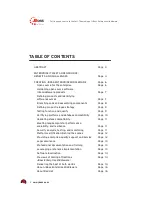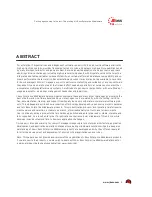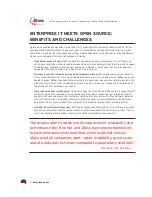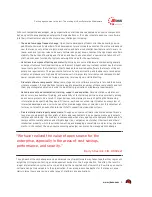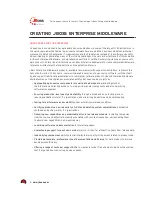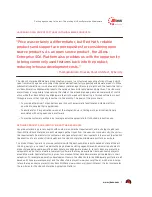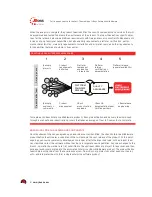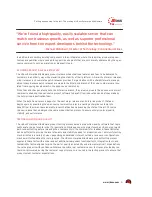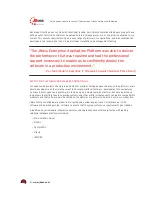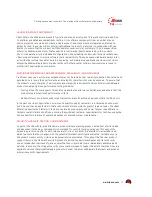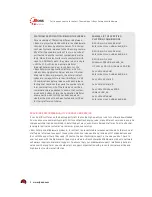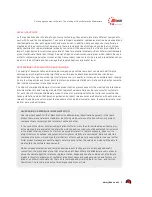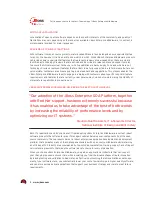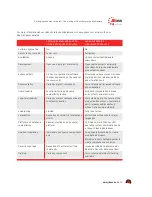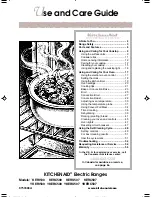
Putting open source to the test: The making of JBoss Enterprise Middleware
www.jboss.com
13
lEgAl AssurAncE
As IT organizations and ISVs adopt open source technology, they accumulate many different components,
each with its own license agreement. To ensure full legal compliance, companies must read and understand
their obligations under each agreement, and many do not. In addition, because open source software is
created by a broad community of developers, there is increased risk of introducing code that is not stan-
dards-compliant or raises intellectual property concerns. At the same time, it is virtually impossible for a
large IT organization to scrutinize every piece of code for potential problems. JBoss Enterprise Middleware
products eliminate these risks through Red Hat’s Open Source Assurance program, which indemnifies and
protects customers against any issues arising from product code contents. As a result, organizations know
what is in their software and can manage their legal obligations at a higher level.
PrOfEssiOnAl dOcuMEntAtiOn And trAining
The quality of documentation and training accompanying a software product can make the difference
between a very straightforward project and one with many headaches and wasted hours and days.
Documentation for open source project software can vary in quality, accuracy, and completeness — ranging
from a few blog entries and forum posts to professional documentation sets. But even the best documenta-
tion is seldom provided in localized versions.
The JBoss Enterprise Middleware structured productization process supports the creation of professional
documentation sets and training modules that represent valuable, time-saving resources for customers.
For each JBoss Enterprise Middleware product, a team of professional technical writers ensures that de-
tailed installation guides, configuration guides, and product release notes are delivered with each product
release. To enable products to meet the requirements of a global customer base, these materials are local-
ized for each product release.
lEVErAging A rEfErEncE iMPlEMEntAtiOn
One important benefit of the JBoss Enterprise Middleware productization approach is that each
product becomes a reference standard — identifying which versions of various JBoss.org project
components are recommended to interact with each other.
In the case of the JBoss Enterprise Application Platform, more than 15 individual open source proj-
ect components are evaluated to determine which specific versions should be selected for inclusion
in the productization process. Factors such as product maturity, feature exposure, open source
project community uptake, and potential for long-term viability are considered. Because selected
component versions will undergo the full battery of tests and be fully supported for five years after
initial product release, product managers carefully ensure that the selected versions will be able to
meet enterprise software requirements.
While component selection and comprehensive product testing are important, added benefit
comes from the economies of use that occur when all JBoss Enterprise Middleware users are exer-
cising the same supported reference implementation. Expanded use of a common set of software
products results in expansion of customer-driven test cases and usage scenarios, and fosters cre-
ation of an enterprise community that can recommend and prioritize features, fixes, and test con
-
figurations. The result is products of even higher quality over time.


